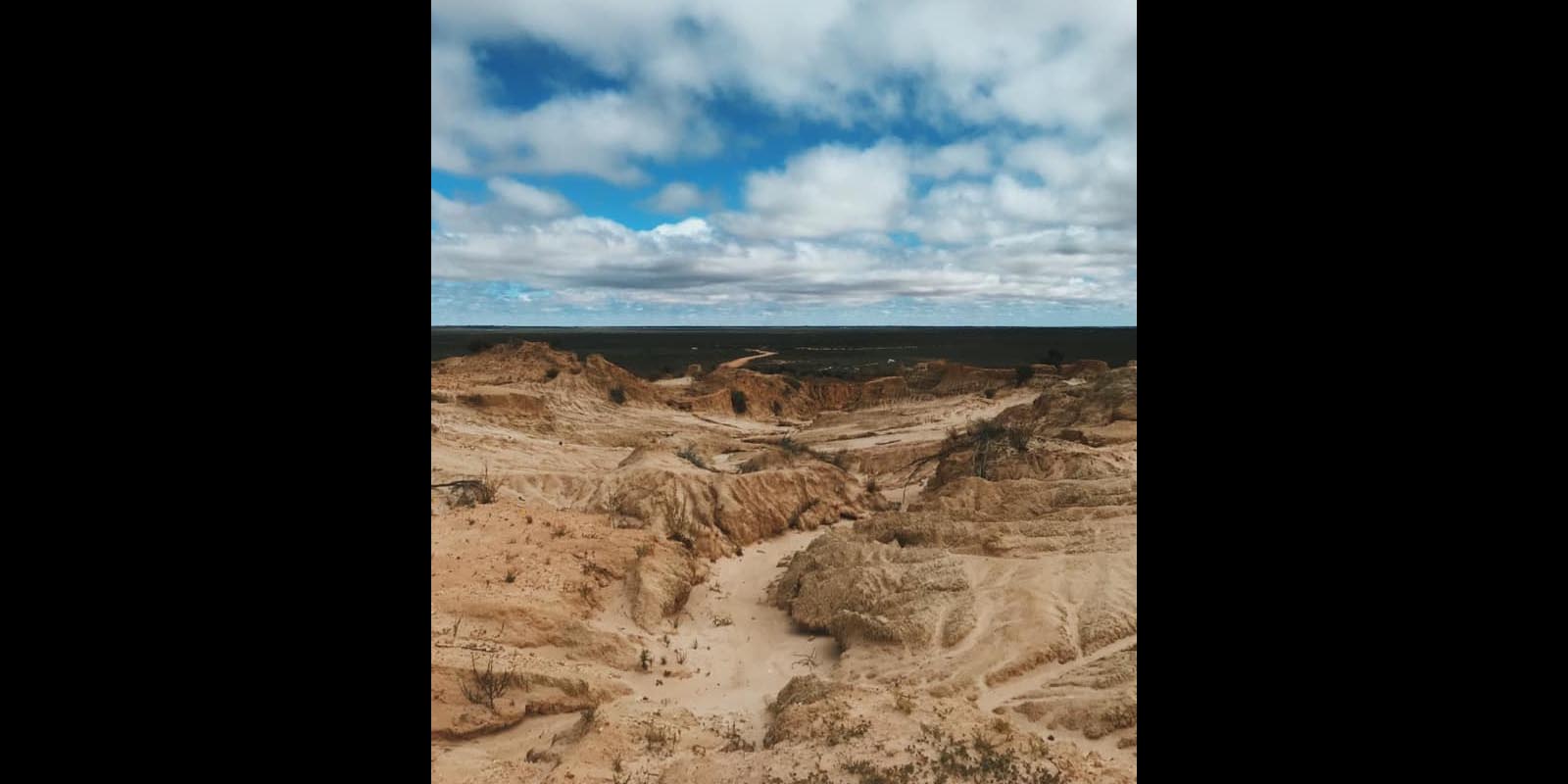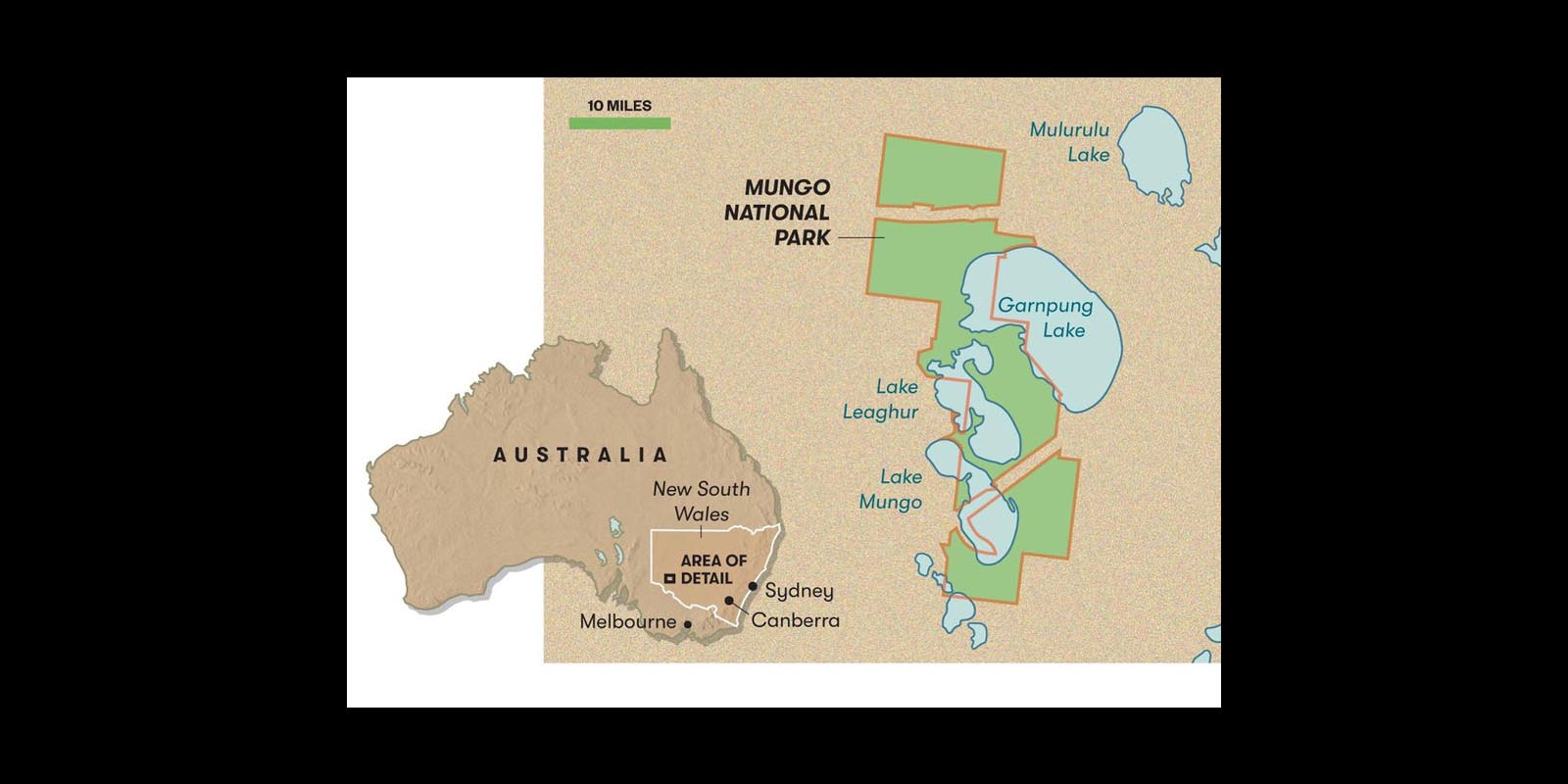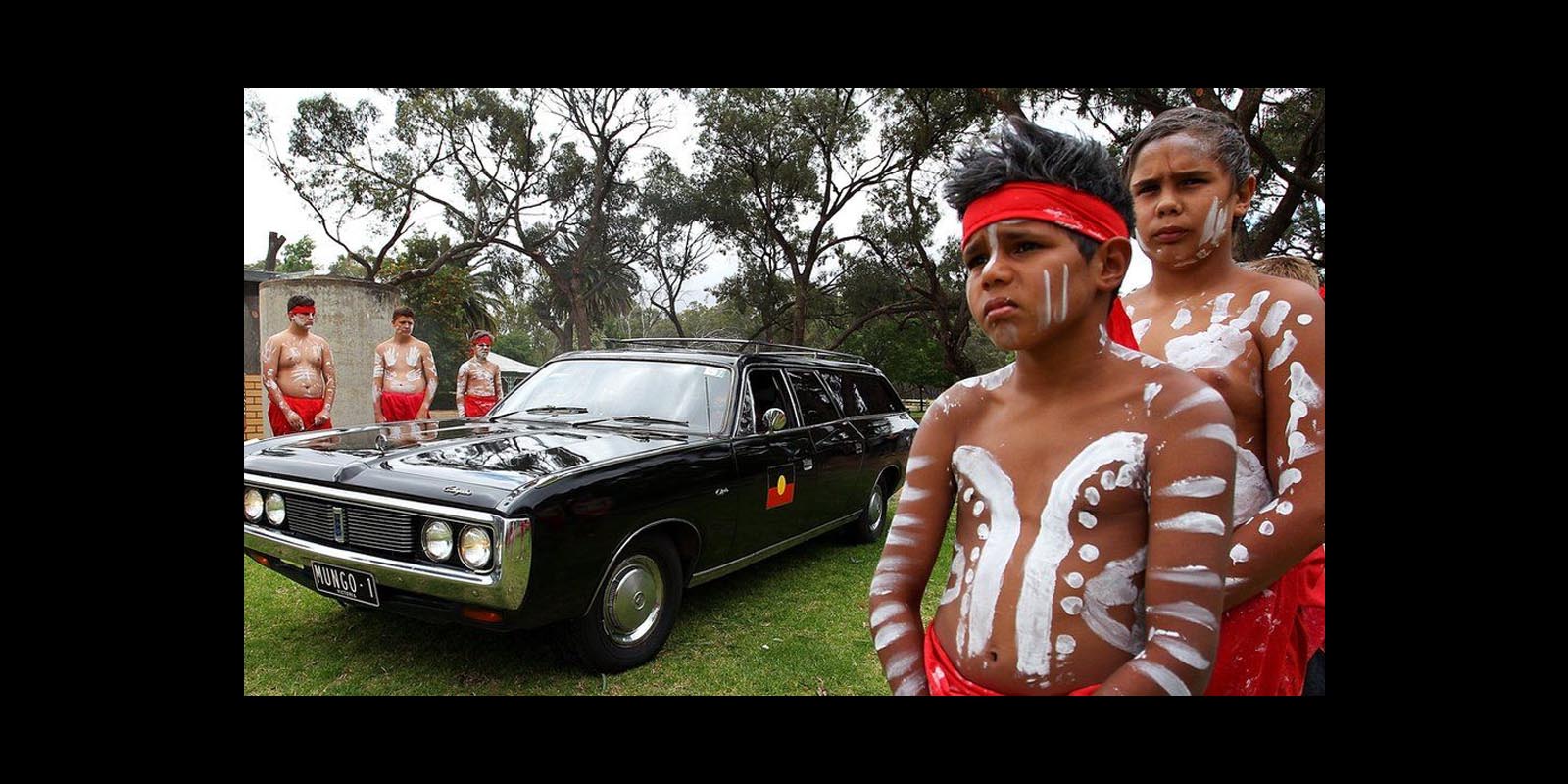Mungo National Park is located on Paakantji, Mutthi Mutthi and Ngiyampaa country in New South Wales.
Artefacts, burial sites and even foot prints have been found here that have helped put official dates on what Aboriginal people already knew – that we have been here far longer than people understand.
Mungo Lady and Mungo Man helped to re-write what we scientists believed the history of this country was and their remains are some of the oldest of modern humans found outside of Africa.


Image: Mungo National Park, Georgia Capocchi-Hunter.
Discovery of the Mungo Lady and Mungo Man
Mungo Lady
Mungo Lady was discovered in 1968 by Jim Bowler, an archaeologist. He was investigating around the area when he discovered freshwater mussels and tools and then found what seemed to be burned bones. He returned the following year joined by John Mulvaney and Rhys Jones who had more of a look and they had found a jaw. They collected the bones in a suitcase and immediately took them back to the Australian National University.
Mungo Lady was alive about 42,000 years ago and would have lived along the shores of Lake Mungo. She was cremated by her family, this is the oldest known cremation in the world.
Mungo Man
Mungo Man was discovered in 1974 by Jim Bowler after heavy rains in the area had allowed the sand to wash away from his burial site, he reached out to anthropologist Alan Thorn to help uncover the remains and an almost complete skeleton was found.
Mungo Man is dated to have lived around the same time as Mungo Lady (about 42,000 years ago). He was an older man, estimated to have been about 50 years old when he passed and his bones showed evidence of arthritis.


Image: Mungo National Park Location Map (Guilbert Gates), Smithsonian Magazine.
Returning to country
Mungo Lady
After much negotiation, Mungo Lady was returned home in 1992. Unfortunately, she has yet to be re-buried as the lunette where she was first discovered has ongoing erosion problems. For the moment, she rests in a safe place at Mungo National Park.
Mungo Man
In 2015 the Australian Nation University relinquished the remains of Mungo Man and apologised for the hurt his original removal had caused.
Mungo Man was returned to his home in 2017 after a long fight by mob. He was returned in a black vintage hearse that began its journey in Canberra and was followed by a convoy of Aboriginal Elders and activists.
A welcome home ceremony was hosted by the traditional owners attended by hundreds of people and was buried in a secret location.
Tradition vs Science
Both Mungo Lady and Mungo Man were removed without permission or the inclusion of the traditional owners. There is a big issue with ancestral remains being kept away from country and it causes a lot of pain and hurt for mob who wish to have their ancestors home so that they can finally be allowed to rest.
While there is an understanding that these remains can aid in scientific discovery it can’t be at the expense of culture, lore and respect and mob must be a part of the journey every step of the way.


Image: Community pay their respects as a hearse carries the remains of Mungo Man (Lisa Maree Williams / Getty Images), Smithsonian Magazine.
Sources
- Visit Mungo, Mungo Lady and Mungo Man
- BBC News, Mungo Man: Australia's oldest remains taken to ancestral home
- ABC News, Mungo Man returned to ancestral home where he died 40,000 years ago
- Smithsonian Magazine, A 42,000-YEAR-OLD MAN FINALLY GOES HOME
